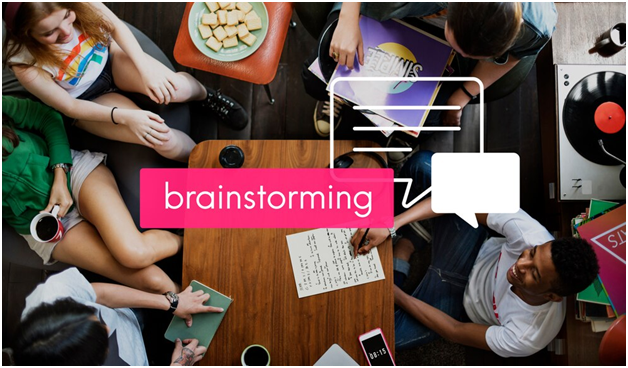Fonts are not mere text adornments but potent conveyors of emotion and meaning. Whether they are the classic elegance of serifs, the modern simplicity of sans-serifs, or the artistic flair of scripts, each has a unique emotional resonance.
Understanding emotional cues is pivotal in selecting the right font for your content marketing. It must align harmoniously with the emotions you want to evoke. Typography is the art of choosing fonts, and it possesses a power that transcends aesthetics. Essentially, it’s the brushstroke of words, your brand’s voice’s tone.
In this article, we’ll decipher the emotional language of fonts and dive deeper into typography, uncovering straightforward steps to harmonize it with your brand and champion content marketing rivalry.
Demystifying Font Families, Styles, and Weights
First, fonts come in an intricate array of families, styles, and weights, each serving a distinct purpose in your advertising endeavors.
● Families: These are like clans, grouping fonts with similar characteristics. For instance, the Helvetica family includes various styles and weights like Neue Light and Neue Bold.
● Styles: Styles within a family alter the appearance of text. You’ve got italic, bold, bold italic, and more. These variations are like the different brushes a painter uses to design texture.
● Weights: These indicate the thickness or heaviness of characters, from ultra-light to extra-bold. For example, use bold characters for headings and light for descriptions when using a price list maker. Such tools usually offer features to experiment with fonts, where you can preview and tailor the document to your needs.
Choosing the right combination of these aspects is crucial for maintaining readability and enhancing your content’s visual appeal.
Size, Spacing, and Kerning (SSK)
Beyond the above mentioned elements, you must also pay close attention to the size, spacing, and kerning (SSK). Usually, the size of your text depends on different aspects, but it must match the context and medium. Err on the side of caution and stick to 10-12 points when composing a body text.
Headings, however, are usually larger, so ensure to test different sizes and check how they look on various screens. Keep in mind that balance provides better readability without overwhelming the audience.
Spacing is equally essential because it impacts your page’s discoverability and aesthetics. Adjusting the leading prevents text from feeling cramped or disjointed. Likewise, analyze whether spacing is accurate across numerous devices.
Finally, kerning refers to the spacing between individual characters. Proper kerning eliminates awkward gaps or overlaps and secures the correct text flow and more coherent saccades (a rapid movement of the eyes between fixation points).
Capturing Your Brand Essence
Your brand’s identity is your unique fingerprint in the market. Fonts can amplify or diminish that identity, so thoughtfully approaching typography is critical to achieving web recognition.
Keep in mind that your brand is more than just a store with products and services. It’s an individual with its personality and values. Asking the following questions will help you land the right font for your company:
1. Does my brand include playful elements, or is it serious? Or perhaps it’s modern or traditional, or innovative or dependable?
2. What does my enterprise stand on? Am I focused on sustainability, innovation, or customer-centricity?
Expert Insight: Create a brand style guide that outlines your brand’s personality, values, and the emotions you want to evoke.
Upon answering these questions, it’s time to choose fonts that echo that language. Your choice lies between serif fonts, sans-serif fonts, and script fonts:
1. The first type conveys tradition and reliability and is excellent for brands with a strong history or a focus on heritage.
2. The second type is clean, modern, and ideal for contemporary and forward-thinking brands and startups.
3. The third type focuses on creativity and personalization. It adds that human touch to content to highlight the brand’s openness and responsiveness.
Maintaining a consistent font palette across various platforms and media is crucial for reinforcing your brand’s image. Ensure your logo–your visual flagship–A) is in place, and B) uses fonts representing your enterprise.
Font Selection Handbook
As implied, selecting fonts for your content marketing isn’t just an artistic choice but a strategic decision that can profoundly impact how your message is received. Since we now know the basics of typography and critical questions to answer, let’s understand how to choose fonts that align with any brand and secure meaningful communication with people.
Ponder Content Type
Using the same font for various content types is not a good idea. The font you use for legal documentation must differ from what you use for product promotion and public announcement. That’s why it’s best to tailor fonts to specific content types. Go simple and classic with legal documents and correspondence by sticking to Georgia. For a marketing campaign, lean toward modern sans-serif fonts for a sleek, eye-popping look.
Design Font Pairing Strategies
Effective font pairing creates a visual hierarchy that guides readers through your content. Consider incorporating various fonts strategically to achieve this balance. For example, you can pair fonts with contrasting characteristics. Combine a bold, attention-grabbing headline font with a more neutral, readable body font. Creating such a contrast helps establish a clear hierarchy, making your text more engaging and digestible.
Refine Your Palette
Ensure to make data-driven decisions through A/B testing. This method can reveal valuable insights into which fonts resonate best with your followers.
Besides, don’t hesitate to gather feedback from your audience using surveys or focus groups to collect vital opinions on fonts. Feedback often unveils subtle preferences and perceptions that data alone may not capture.
Key Takeaways
Typography is your secret weapon to transform words into captivating narratives everyone can relate to. Remember that font selection is not a static process but an evolving one.
Your brand may change, and design trends will shift, so keep your mind open and be prepared to implement changes when necessary.
Letters are your voice in the crowded realm of content marketing, shaping perceptions, evoking emotions, and leaving a lasting imprint on people.



